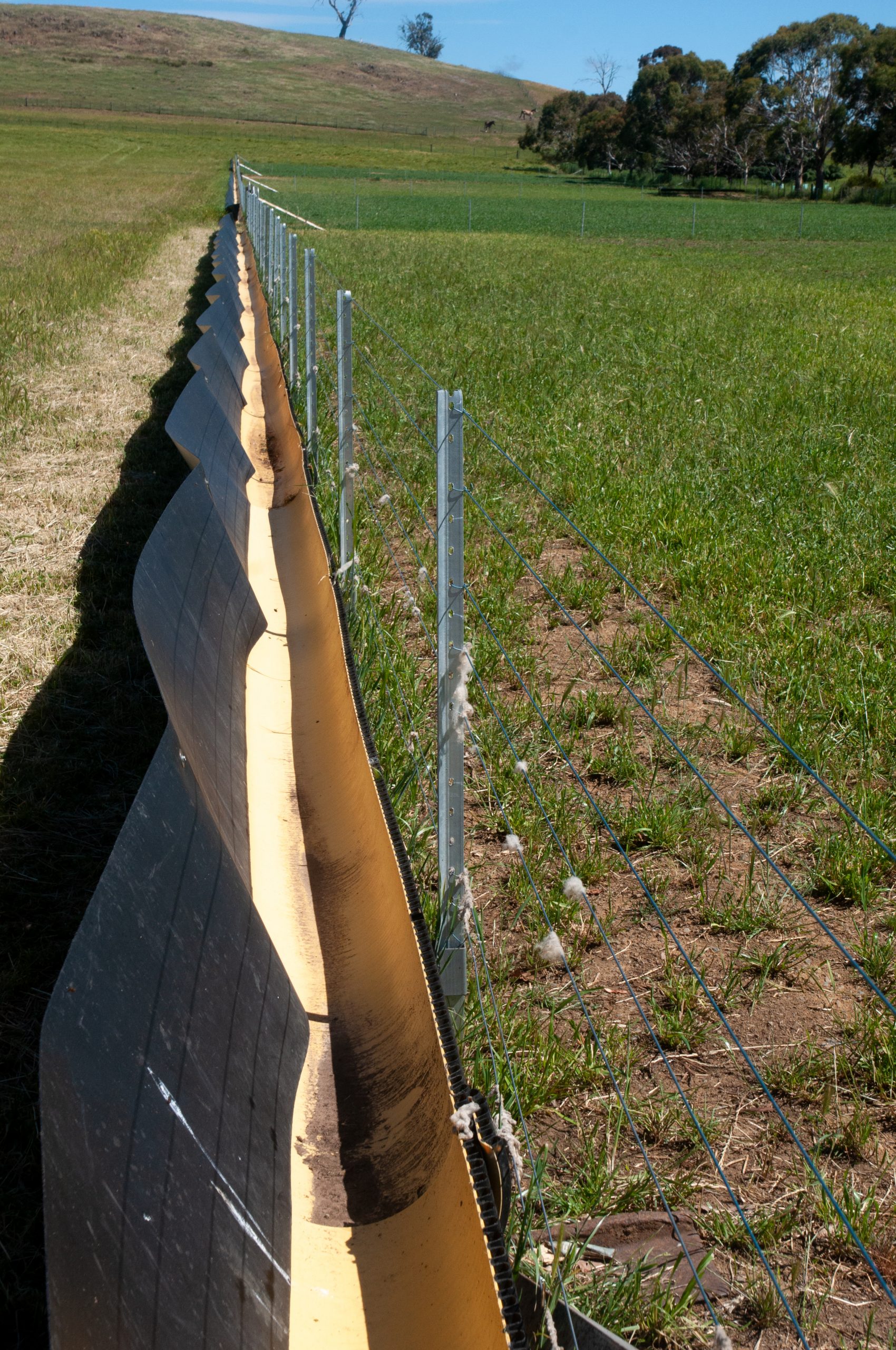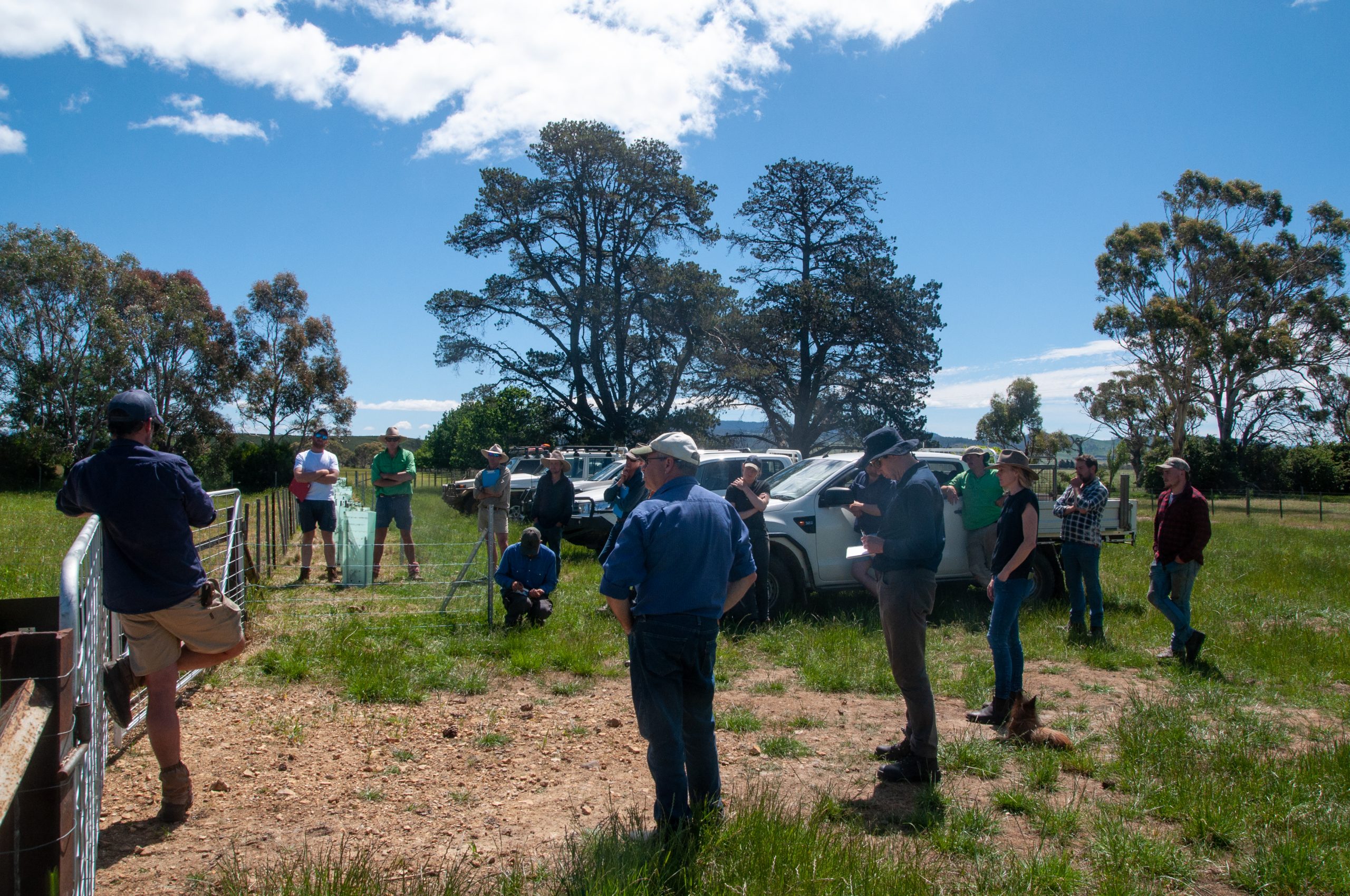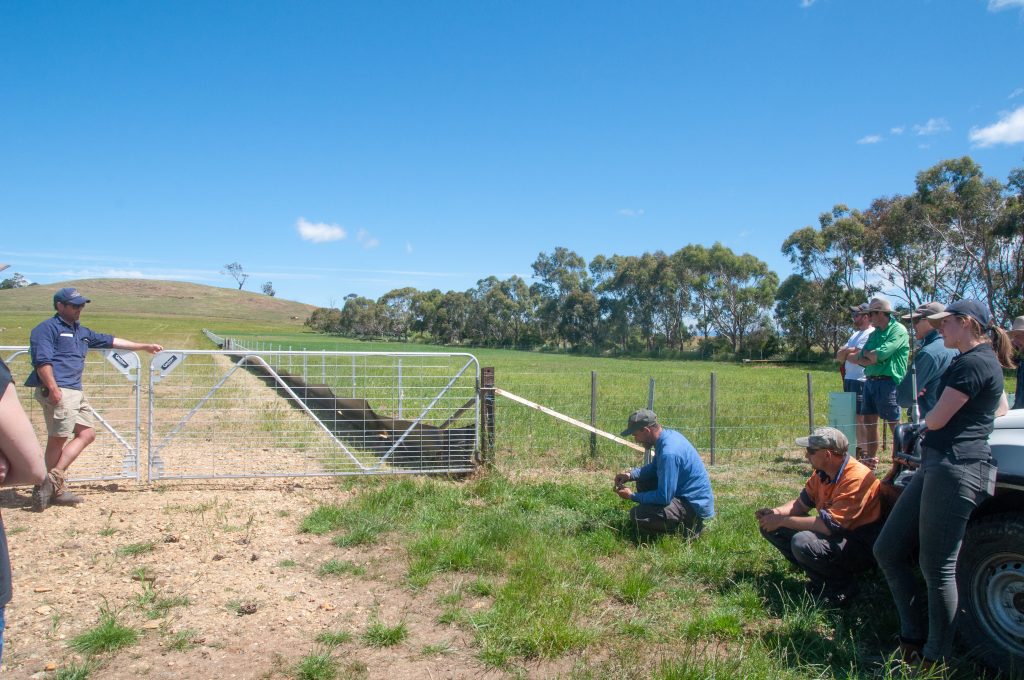On Friday 20 November, farmers from around the Bothwell region gathered to find out more about how sheep farmer Richard Ellis is using drought lotting to reduce pressure on his paddocks. Drought-lotting is employed to maintain ground cover, thus minimising soil and nutrient loss, that result from bare ground, and to maintain essential feed in drought conditions. While this technique is popular in drier regions of mainland Australia, Tasmania may not be an obvious candidate for this approach. However, with the increasing incidence of drought in Tasmania’s central and eastern regions, it is proving to be a very effective tool for farmers who have been experimenting on their properties.

Set up of the external feeding trough
After receiving a $15,000 Landcare Tasmania grant in 2019, Richard used the funding to trial a new drought lotting set-up. The funding allowed Richard to invest significantly more than he otherwise would have in developing this system. It’s an experiment that has paid off. Inspired by similar designs he had seen, Richard developed and installed an external feeding trough that aimed to be as labour-efficient as possible. After needing to use the drought lotting pens almost as soon as they were installed, Richard noted multiple benefits from his setup including reduced feed waste and lower feeding requirements.
Richard’s approach is a great example of the skills that exist within the farming community and how this innovation is being put into practice. Thanks to the work of Derwent Pasture Network project, this local knowledge and expertise is being shared to the wider agricultural community and builds on the investment provided by Landcare Tasmania.
The Derwent Pasture Network led by the Derwent Catchment Project and supported by NRM South through funding from the Australian Government’s National Landcare Program, seeks to answer difficult questions, explore management options and support effective decision making in dryland grazing management. For more information on the network and to hear more from farmers who are using drought lotting on their properties, head to the Resources page on the Derwent Pasture Network website

